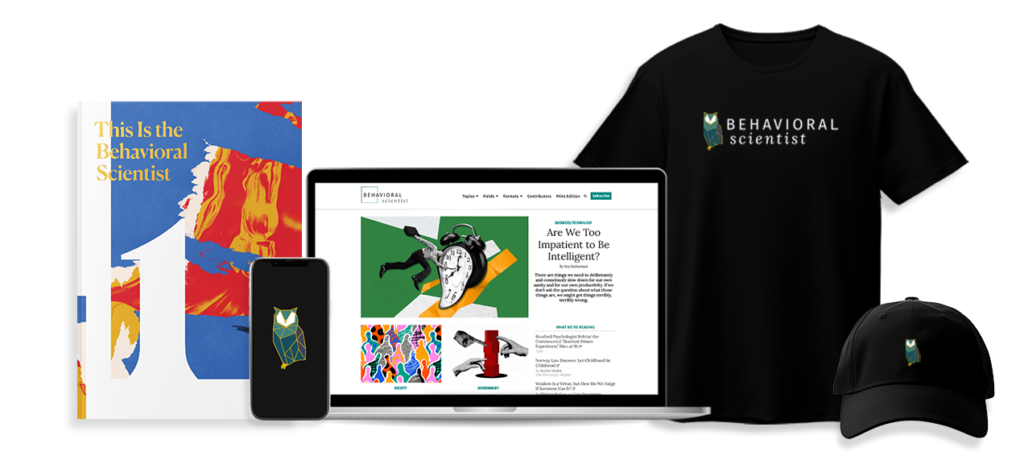As an introvert and an only child, I was fortunate to learn one skill early on in my life: how to be alone. I didn’t even realize it was a skill until people would tell me, offhandedly, that they “hated to be alone” or even that they “couldn’t be alone.”
For many years, the line between lonely and alone was blurry. Some days, I craved connection, and wished for a sibling. Other days, I relished my own company, writing detailed stories about the squirrels living in my backyard, etching charcoal “self-portraits,” and choreographing elaborate dances to the soundtrack of Hercules. My surplus of solitude forced me to find solace in it, and so I did.
As I became an adult, I continued to prioritize finding time for reading and reflection, which remained essential ways for me to recharge and process my experiences.
And then, I had my son. Becoming a mother changed my relationship to time—alone time in particular. It made my once plentiful solitude more scarce, sacred, and complicated. It has also made me wonder: How do I make the most of this now much rarer resource?
Becoming a mother . . . made my once plentiful solitude more scarce, sacred, and complicated. It has also made me wonder: How do I make the most of this now much rarer resource?
Trying to answer this question led me to the work of Virginia Thomas, an assistant professor of psychology at Middlebury College who studies social and emotional development across our lives.
Like me, Thomas treasured her alone time growing up, using it to read, and to write short stories, poems, and plays. Unlike me, she was one of four siblings, which meant “physical solitude was almost impossible to get.” Instead, she learned to “create a psychological bubble of solitude for myself even when people were around me…. I was always full of ideas and those ideas really germinated when I was able to be in my own world, thinking and dreaming.”
As she grew up and began a Ph.D. in developmental psychology, she found something surprising. While there was a lot of research about the importance of relationships to our developmental well-being, she found hardly anything about the benefits of being alone. Distinct from loneliness—which is alone time we don’t want—solitude is chosen, and meant to be rejuvenating and generative, a state she and I had both found throughout our lives.
Since then, Thomas has focused her career on asking and answering two fundamental questions: What are the benefits of solitude, and how do people use solitude well?
Before we get to that, let’s clarify a common misunderstanding: Solitude doesn’t encompass just any alone time. The time Thomas studies is mindful and intentional. It is not watching a show on Netflix, although that can be part of the overall experience, especially if you’re entering into solitude in a depleted or emotionally dysregulated state (hello, caregivers!).
Distinct from loneliness—which is alone time we don’t want—solitude is chosen, and meant to be rejuvenating and generative.
In that case, Thomas says, “sometimes what you need is just to chill for an hour and watch something to [reduce the activity in] your nervous system. Once you do whatever that mindless activity is and get back to your baseline, then you can start to think, feel, and do something that’s generative and meaningful to you. But you can’t do that right away if you’re exhausted.”
The key is continuing to pay attention to your internal state so you know when you’re ready for the more generative part of the practice. “It takes discernment to know when you’re being mindless with your solitude,” Thomas says, like if all of the sudden watching one episode turns into seven, or if you find yourself scrolling endlessly on Instagram. Social media can be especially harmful, and can obstruct the positive aspects of solitude, Thomas warns.
The benefits of solitude
Cultivating solitude offers an opportunity and a gift, one that philosophers (Stoics in particular), poets, and artists have long recognized: the ability to create a revitalizing refuge that you can return to wherever and whenever.
“Men seek retreats for themselves, houses in the country, sea-shores, and mountains,” wrote the Stoic philosopher Marcus Aurelius in Meditations, which historians believe was sometime between 170-180 AD. “But this is altogether a mark of the most common sort of men, for it is in thy power whenever thou shalt choose to retire into thyself. For nowhere either with more quiet or more freedom from trouble does a man retire than into his own soul…. Constantly then give to thyself this retreat, and renew thyself.”
Solitude offers more than a recharge. In his Notes on the Melody of Things, the Austrian poet Rainer Maria Rilke reflects that “the more solitary a person is, the more solemn, moving and powerful their community.” The solitary part is only half of the story. Rilke’s words, backed by Thomas’s work, suggest that connecting more deeply with ourselves when we’re alone allows for deeper relationships with others.
When we’re tired of being social, solitude can replenish our energy “so that we can go back out into the world of relationships and connect from a place where we can actually give something back,” Thomas says. “So many of my [research] participants have said that if they are deprived of the alone time they need, they’re irritable, aggressive, moody, they snap at people, and it harms their relationships. They’ve learned, If I can just go away for a while, I’ll come back a better person and be able to relate with you without feeling resentful, drained, or irritable. All of the things we’re experiencing in the social world, we bring it into our solitude to digest, reflect on and grow from. It’s a dance between both worlds.”
We all need different amounts of social time and alone time. Depending on our temperament, being social or being solitary may come more naturally to us. If the solitary life is less natural to you—if you avoid it at all costs and loathe the experience of being alone—what do you do then?
Developing solitude skills
Through her research Thomas has identified skills to help people learn how to enjoy their time alone, and developed a program to teach people those skills. In a current working paper, she found that her program successfully developed those skills. Her solitude skills are organized into three groups—connecting with self, protecting time, and finding a balance between solitude and social connection.
Connecting with self
To enjoy your time alone, you first need to figure out what you like to do when you’re on your own. Maybe it’s journaling, taking long walks, cooking, or drawing. Perhaps you don’t know yet, and you’re living the question of: What do I like to do when I’m alone? (If so, might I recommend starting a questions practice?)
As anyone who has spent time alone knows, it doesn’t always feel peaceful and relaxed—in part because of the emotions and thoughts that can emerge. The ability to face, accept, and listen to your own emotions when you’re alone “might be the most difficult skill,” Thomas told me.
“In our culture, where we’re very productive, active, and busy, we often put our emotions—and the dilemmas, questions, and conflicts that we have about our lives and relationships—on the back burner,” she said. “By the time we find ourselves with alone time, those emotions come back up in full force. This can be really uncomfortable and distressing.” All of which can make people want to run away from solitude. “The skill here,” she said, “is learning how to sit with those emotions, allowing them to take their turn and their time … to listen to them as messengers of valuable information.”
Better emotional regulation can emerge from learning how to introspect, or the ability to enjoy and be curious about your inner workings. It can mean asking questions like: What do I believe? Who am I? What do I want? “The more we can become comfortable with that self-dialogue, the more rich solitude will be for us,” she says.
Protecting time
“When I first started solitude research I was newly married and I had no children yet, so solitude was easy [to find] back then,” Thomas told me.
With two children now, finding solitude has become a challenge and requires that she put into practice additional skills to make sure she’s protecting that time (this sounded familiar). These include carving out the time in the first place (think calendar blocks), “negotiating for that time, and validating to myself this is okay, it’s not selfish, I shouldn’t feel guilty for taking this time.” Claiming this time can be especially hard for those embedded in cultures that prize sociability, or when your family or community demands a lot of your time and attention.
Connecting more deeply with ourselves when we’re alone allows for deeper relationships with others.
Part of protecting time means using it mindfully. It’s about having the self-awareness to consider what you really need and want so that you don’t regret those choices later. It also means knowing when a few minutes spent Instagram shopping is helpful as a tool to recharge (like in the Netflix example earlier), or if it’s just an avoidance tactic.
For instance, I used to feel guilty about using my small shard of free time in the evening to watch some TV. At the same time, I was too exhausted after putting my son to bed to immediately start reading and journaling, activities I enjoy, but that require some cognitive and emotional space. I’ve found that watching a show helps me decompress enough to be able to enter into a more nourishing solitude space. (And to accept that some nights, journaling is only a sentence or two.)
Finding balance
Keep an eye out for physical signals that you need solitude. This might be feeling depleted or overstimulated. Or, if you’ve had enough alone time, you might feel lonely or bored.
These signals can be confusing. For instance, if we feel bored at the beginning of our time alone, that may indicate not that we need to call a friend, but rather that we haven’t identified the activities that will prove most meaningful for us in solitude. It could be a sign that we haven’t yet identified what we need from being alone.
“The function of boredom is not to make us bored, it is a call to action,” writes neuroscience professor James Danckert. “It is telling us that what we are doing now is failing to satisfy us in some important way. But its purpose is not to just push us into any action. Boredom encourages us to choose actions that give expression to who we are.”
Knowing when to stay in solitude or return to social life requires discernment and inner knowing. Are you choosing actions that give expression to who you really are?
This points to what Thomas thinks is the best part of cultivating solitude: It brings you closer to yourself so you’re better able to pick up on the little signals of what you need and want—not just when you’re alone, but all the time. “When I don’t have time to be alone, I miss myself, I long to reconnect,” she says. “That’s the real treasure of solitude.”






